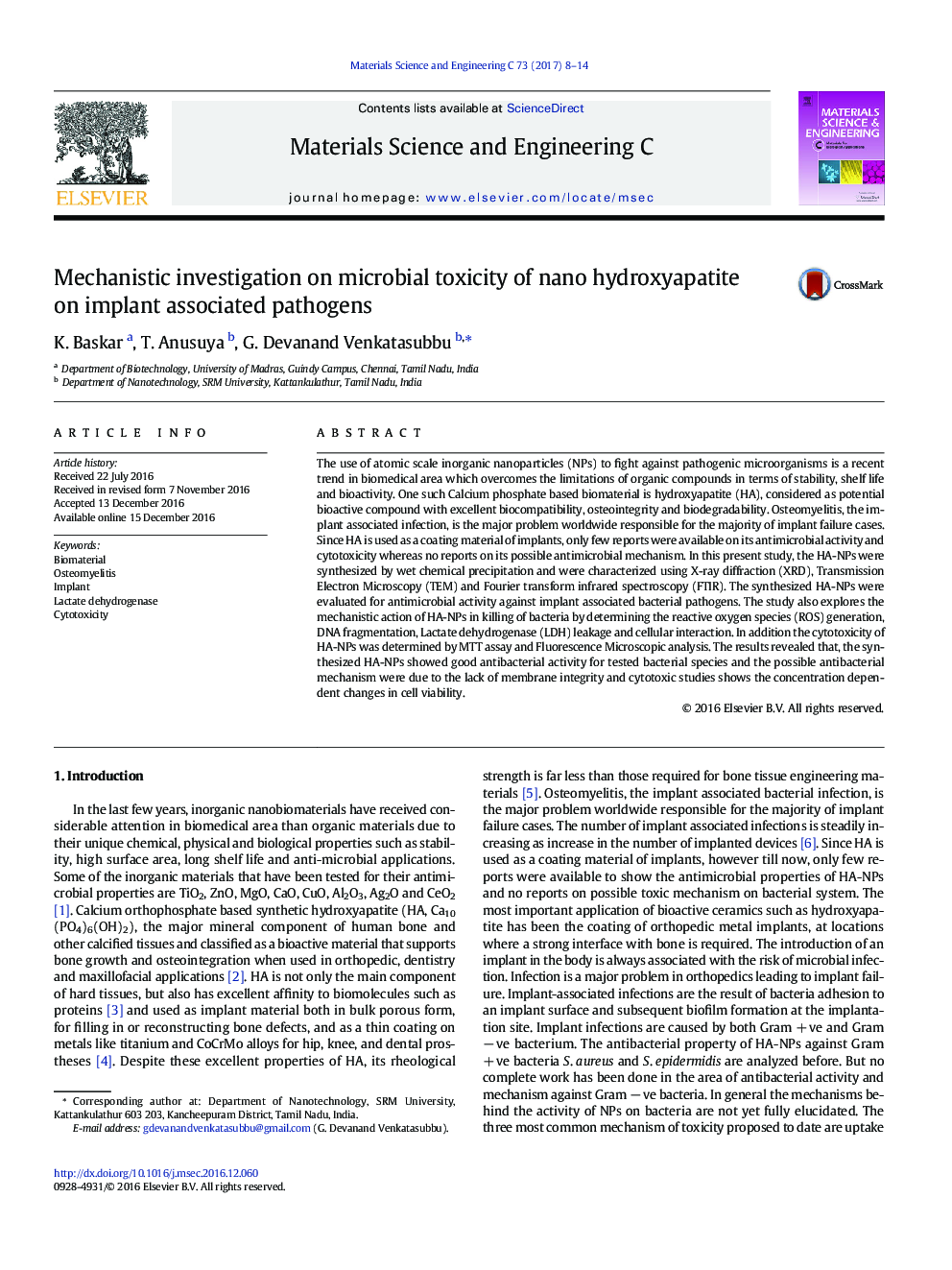| کد مقاله | کد نشریه | سال انتشار | مقاله انگلیسی | نسخه تمام متن |
|---|---|---|---|---|
| 5434900 | 1509148 | 2017 | 7 صفحه PDF | دانلود رایگان |
- Antibacterial activity against Gram â ve bacterium
- Mechanism of antibacterial activity is analyzed.
- DNA fragmentation, growth curve, LDH, ROS are analyzed.
- The mechanism is by damaging cell membrane.
- Hydroxyapatite is biocompatible.
The use of atomic scale inorganic nanoparticles (NPs) to fight against pathogenic microorganisms is a recent trend in biomedical area which overcomes the limitations of organic compounds in terms of stability, shelf life and bioactivity. One such Calcium phosphate based biomaterial is hydroxyapatite (HA), considered as potential bioactive compound with excellent biocompatibility, osteointegrity and biodegradability. Osteomyelitis, the implant associated infection, is the major problem worldwide responsible for the majority of implant failure cases. Since HA is used as a coating material of implants, only few reports were available on its antimicrobial activity and cytotoxicity whereas no reports on its possible antimicrobial mechanism. In this present study, the HA-NPs were synthesized by wet chemical precipitation and were characterized using X-ray diffraction (XRD), Transmission Electron Microscopy (TEM) and Fourier transform infrared spectroscopy (FTIR). The synthesized HA-NPs were evaluated for antimicrobial activity against implant associated bacterial pathogens. The study also explores the mechanistic action of HA-NPs in killing of bacteria by determining the reactive oxygen species (ROS) generation, DNA fragmentation, Lactate dehydrogenase (LDH) leakage and cellular interaction. In addition the cytotoxicity of HA-NPs was determined by MTT assay and Fluorescence Microscopic analysis. The results revealed that, the synthesized HA-NPs showed good antibacterial activity for tested bacterial species and the possible antibacterial mechanism were due to the lack of membrane integrity and cytotoxic studies shows the concentration dependent changes in cell viability.
56
Journal: Materials Science and Engineering: C - Volume 73, 1 April 2017, Pages 8-14
